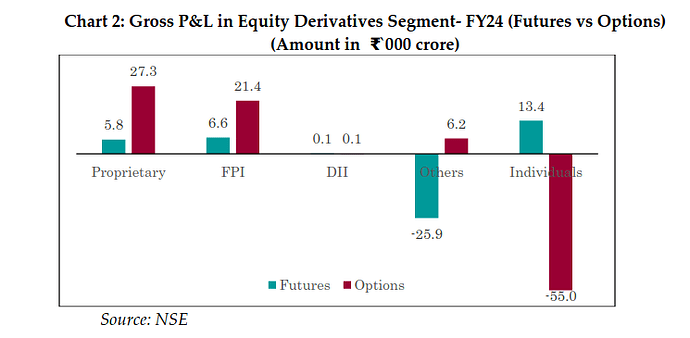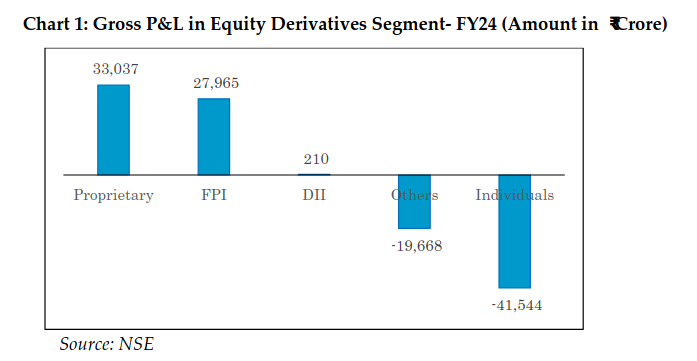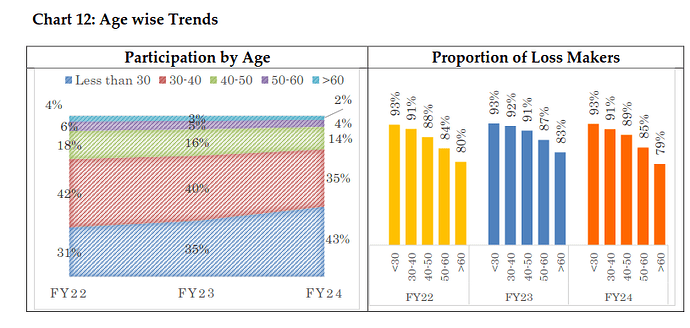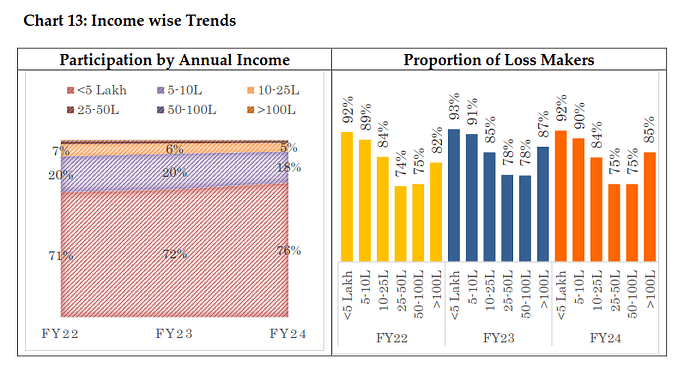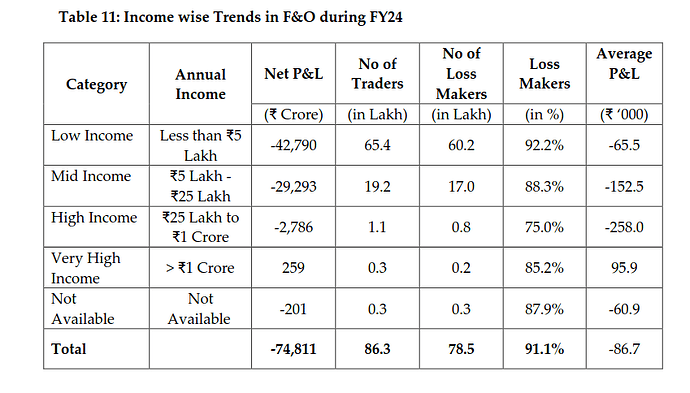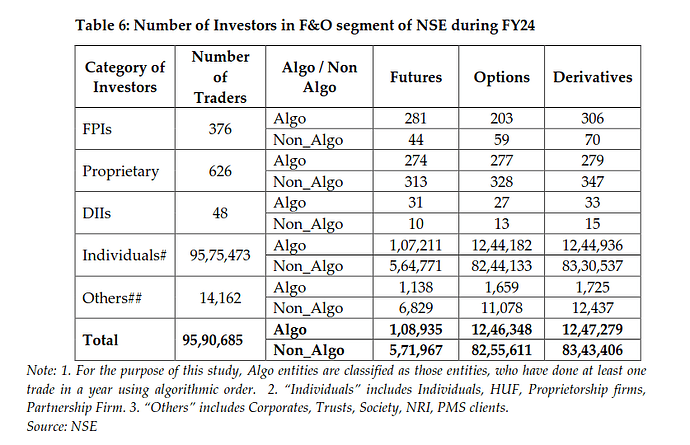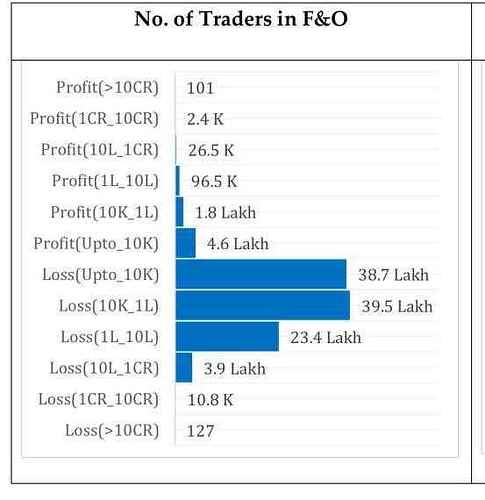SEBI’s new study has revealed that over 9 out of 10 individual traders in the equity futures and options (F&O) segment continue to incur significant losses. The aggregate losses of individual traders exceeded ₹1.8 lakh crores over the three-year period between FY22 and FY24.
You can check the highlights from the previous study by SEBI in January 2023 here:
Key highlights
High Loss Rates Among Individual Traders:
93% of over 1 crore individual F&O traders incurred average losses of around ₹2 lakh per trader (inclusive of transaction costs) during the three years from FY22 to FY24.
The top 3.5% of loss-makers, approximately 4 lakh traders, faced an average loss of ₹28 lakh per person over the same period, inclusive of transaction costs.
Only 1% of individual traders managed to earn profits exceeding ₹1 lakh, after adjusting for transaction costs.
Individuals made money in Futures, while losing more than 4 times in options
Individuals made losses in Options to the tune of ~ ₹55,000 crore in FY24, they made profits to the tune of about ~ ₹13,400 crore in Futures
Profit Distribution Among Proprietary Traders and FPIs:
In contrast to individual traders, proprietary traders and Foreign Portfolio Investors (FPIs) as a class booked gross trading profits of ₹33,000 crore and ₹28,000 crore, respectively, in FY24 (before accounting for transaction costs).
Against this, Individuals and others incurred a loss of over ₹61,000 crore in FY24 (before accounting for transaction costs).Most of the profits were generated by larger entities that used trading algorithms, with 97% of FPI profits and 96% of proprietary trader profits coming from algorithmic trading.
Category-wise Profit & Loss for FY24
-
In FY24, the Proprietary traders’ category earned the highest gross profit (i.e. trading profits before accounting for transaction costs) of about ₹33,000 crore in the equity F&O segment of NSE, followed by Foreign Portfolio Investors (FPIs) category (₹28,000 crore).
-
Domestic Institutional Investors (DIIs) earned modestly in the F&O to the tune of ~ ₹200 crore in gross profits. On the other hand, the Individual category experienced the highest gross loss of ~ ₹41,500 crore, while ‘Others’ category (which represented mostly Corporates, Trusts, NRIs and PMS clients) incurred a gross loss (i.e. trading loss before accounting for transaction costs) of ~ ₹19,700 crore.
Transaction Costs for Individual Traders:
On an average, individual traders spent ₹26,000 per person on F&O transaction costs in FY24.
Over the three years from FY22 to FY24, individuals collectively spent about ₹50,000 crore on transaction costs, with 51% of these costs being brokerage fees and 20% being exchange fees.
Increasing Participation of Young and B30 City Traders:
The proportion of young traders (below 30 years) in the F&O segment rose from 31% in FY23 to 43% in FY24.
Individuals from Beyond Top 30 (B30) cities made up over 72% of the total F&O trader base, a higher proportion compared to mutual fund investors, 62% of whom are from B30 cities.
Income Profiles of Traders:
-
Nearly 76% of the Individual F&O traders (i.e. 65.4 lakh F&O traders) had declared annual income of less than ₹5 lakh and ~ 94% of the Individual F&O traders (i.e. 80.5 lakh F&O traders) had declared annual income of less than ₹10 lakh in FY24.
-
The proportion of “Low Income” traders has increased significantly from 71% in FY22 to 76% in FY24.
-
“Mid Income” traders’ category is the second biggest category with 19.2 lakh traders (i.e. 18% of F&O traders). So, Small and Mid-Income category combined represented almost 98% of Individual F&O traders.
- “Very High Income” F&O traders actually made consolidated net profit of ₹259 crore in FY24, compared to all other categories which made consolidated net losses in FY24. However, about 85% of total traders from this category too incurred losses.
Trading Behavior and Persistence:
-
As many as 76.3% of the loss-making traders persisted with the trading in F&O, despite making losses in the preceding two consecutive years.
-
Out of 24.4 lakh investors who made losses in both FY22 and FY23, 18.6 lakh traders continued to trade in the third year, while 5.8 lakh traders stopped trading in the third year. However, only 8.3% of traders, who persisted in trading in F&O in the third year despite losses in the two preceding years, succeeded in making profit in the third year.
You can check the detailed SEBI study here:
